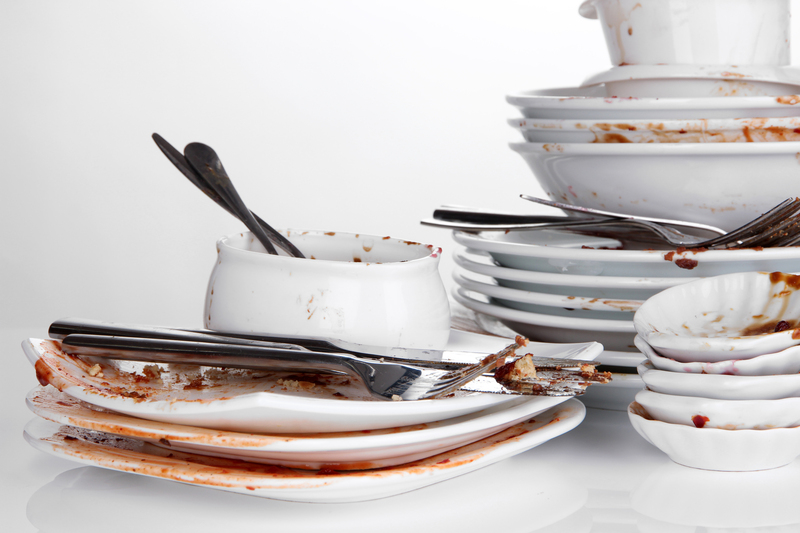Your Ultimate Guide to Spotless Curtains
Posted on 21/06/2025
Your Ultimate Guide to Spotless Curtains
When it comes to home decor, curtains play a crucial role in defining the ambiance of a room. Spotless curtains not only enhance your home's visual appeal but also foster a healthier atmosphere. However, keeping your drapery clean can be a challenge, especially with the build-up of dust, pet hair, allergens, and unexpected stains. If you want to ensure your home's window treatments remain fresh and inviting, this ultimate guide to spotless curtains is your comprehensive handbook for maintaining pristine drapes year-round!

Why Clean Curtains Matter
Many people overlook the importance of regularly cleaning curtains. Curtains act as filters for dust, odors, and airborne pollutants, making them prone to becoming dirty if neglected. Here's why keeping curtains spotless should be a key part of your cleaning routine:
- Improved Air Quality: Clean curtains trap fewer allergens, reducing sneeze-inducing particles in your home.
- Enhanced Aesthetics: Spotless window treatments instantly elevate a room's decor.
- Prolonged Fabric Life: Regular cleaning removes dirt particles that break down fabric fibers over time.
- Odor Control: Get rid of smoke, mildew, and cooking smells that can become trapped in curtain fabric.
How Often Should You Clean Your Curtains?
The frequency with which curtains should be cleaned relies on multiple factors such as fabric type, household habits, and exposure to smoke or pets. As a rule of thumb:
- Light Cleaning: Vacuum or shake off dust every 1-2 weeks.
- Deep Cleaning: Wash or dry-clean every 3-6 months, depending on the level of grime and fabric sensitivity.
- Allergy-Prone Households: Clean monthly to reduce allergens and dust mites.
Discover Your Curtain Type
Not all curtains are created equal. Before rolling up your sleeves, identify the fabric and construction of your window dressings. Here are some common varieties:
- Sheer Curtains: Lightweight and delicate, usually made from voile, lace, or chiffon.
- Blackout Curtains: Heavier with lining, constructed for blocking out light. Usually polyester or blended fabric.
- Cotton Curtains: Easy to manage and typically machine washable.
- Silk and Velvet: Luxurious, but require special care and gentle cleaning.
- Lined Curtains: May have a separate interior lining; both pieces require attention.
Tip: Always check the manufacturer's label before cleaning to avoid damage!
Spotless Curtain Cleaning Methods
Vacuuming Curtains
For routine maintenance, vacuuming is one of the simplest and most effective ways to keep curtains clean:
- Attach the upholstery or curtain tool on your vacuum cleaner.
- Work from top to bottom, using gentle suction to avoid tearing delicate fabrics.
- Vacuum both the front and back of the curtains, paying attention to folds and hems where dust collects.
Vacuuming every few weeks prevents dust from embedding deeply, keeping your drapes spotless for longer!
Machine Washing Curtains
If your curtain fabric is machine washable (check the care tag!), follow these steps for optimal results:
- Remove all curtain hooks and hardware.
- Shake out dust and debris outdoors.
- Use a gentle or delicate cycle with cold water.
- Select a mild, bleach-free detergent.
- Wash curtains separately or in small loads to avoid overcrowding.
- Hang dry or tumble dry on low, according to care instructions.
Note: Machine washing is not recommended for silk, velvet, or any fragile textiles!
Hand Washing Delicate Curtains
Fragile fabrics such as silk, lace, or embroidered sheers require special attention:
- Fill a clean tub or basin with cool water and add a gentle detergent.
- Submerge curtains and agitate gently by hand.
- Rinse thoroughly until water is clear.
- Carefully squeeze out excess water; never wring which can distort fabric.
- Lay flat or hang to air dry. Avoid direct sunlight for fade-prone materials.
Hand washing is the safest way to keep delicate draperies looking spotless and lush.
Dry Cleaning
Some curtain fabrics are labeled "Dry clean only." Taking shortcuts can cause shrinking, color bleeding, or irreversible damage. Before heading to the professionals:
- Check for stains and point them out to the dry cleaner.
- Remove all hooks and weights to protect both curtains and machinery.
- Ask about eco-friendly or sensitive-fiber cleaning if concerned about chemicals.
Tip: Professional cleaning is ideal for heavy or lined curtains, or when you need the very best results.
On-the-Spot Stain Removal
Accidents happen--a glass of wine spills, greasy hands leave marks, or ink gets smudged. Here's how you can address common stains to maintain spotless curtains between full cleanings:
- Blot, don't rub: Use a clean, white cloth to absorb as much as possible immediately.
- Grease stains: Sprinkle with cornstarch or baking soda, let sit for 30 minutes, then brush off before spot-treating.
- Water-based stains: Dab with a mild soap solution or curtain-friendly stain remover.
- Ink marks: Try rubbing alcohol on a cotton swab, testing first on a hidden area.
- Mold or mildew: Lightly mist with white vinegar and water. Always allow to dry completely.
Always test your cleaning solution on an inconspicuous area before applying to visible fabric!
How to Keep Your Curtains Spotless Longer
Routine Care Tips
- Shake or beat curtains outdoors to dislodge dust (especially for thick or pleated curtains).
- Use a lint roller for quick removal of pet hair or surface debris.
- Wipe down curtain rods and surrounding trim regularly to minimize grime transfer.
- Rotate or reposition curtains occasionally to distribute sun exposure and wear evenly.
- Open windows and use exhaust fans to prevent moisture build-up that can cause mold.
Preventing Common Curtain Problems
You can extend the life of your curtains and keep them spotless with a few prevention strategies:
- For homes with pets or smokers, consider washable fabrics or dark colors to disguise mess.
- Install blinds or shades to shield curtains from harsh sunlight that fades color and weakens fibers.
- Keep windows and sills clean to prevent stains and dirt transfer.
- Choose detachable liners for easy removal and washing.
Special Care for Unique Curtain Types
How to Clean Blackout Curtains
Blackout curtains often have rubber or foam backing that can deteriorate in the wash. Maintain them spotless by:
- Dusting or vacuuming both sides routinely.
- Spot clean stains with mild soap and a soft cloth.
- Avoid submerging in water to preserve the backing integrity.
Velvet and Silk Curtains
- Use a soft brush or upholstery attachment to remove surface dust.
- Never wring out water from wet velvet or silk. Press gently between towels.
- Professional dry cleaning is strongly advised for these luxury fabrics.
Net and Sheer Fabrics
- Hand wash with lukewarm water and mild detergent.
- Lay flat to dry or hang with a towel underneath to absorb excess moisture.
- Delicate sheers may be freshened by steaming instead of frequent washing.
Effective Drying and Ironing Tips
- Shake out wrinkles before hanging wet curtains to air dry.
- For stubborn creases, use a low-heat iron or hand steamer, always testing first on a hidden corner.
- Never iron rubber-backed or laminated curtains directly.
- Hang curtains back on the rod when slightly damp--they'll dry without wrinkles and fit perfectly.
Frequently Asked Questions about Keeping Curtains Spotless
Q: Can I wash all types of curtains at home?
A: Not all fabrics are suitable for household washing. Always consult care labels. When in doubt, hand wash or seek professional dry cleaning to avoid damage.
Q: How do I prevent my curtains from fading?
A: Position curtains away from direct sunlight or use lining/backdrops to shield them. Rotate curtains or switch panels seasonally for even exposure.
Q: What's the best way to deodorize curtains between washes?
A: Freshen your drapes by spritzing lightly with a fabric spray, or hang them outdoors on a dry, breezy day. Avoid strong chemical scents that can cling to fabrics.

Conclusion: The Secret to Spotless Curtains
Curtains are a subtle yet powerful element of your home. With regular curtain cleaning and just a little attention, you can enjoy spotless, vibrant, and healthy window treatments for years. Invest in well-made drapery, follow fabric-specific care routines, and don't hesitate to call a professional for challenging stains or luxury textiles.
Remember: Spotless curtains aren't just about looks--they contribute to cleaner air, a fresher home, and peace of mind. Whether your style is elegant silk, playful prints, or simple sheers, clean curtains make all the difference. Start today, and see how quick and rewarding it is to maintain spotless curtains that impress every guest!
Quick Curtain Cleaning Checklist
- Vacuum curtains weekly
- Shake out or lint roll surface dust
- Spot-clean stains promptly
- Deep clean every 3-6 months
- Check labels for care instructions
- Dry and iron according to fabric needs
- Replace or refresh as needed for continued vibrancy
With this ultimate guide to spotless curtains, your windows will radiate freshness, beauty, and cleanliness all year long.




